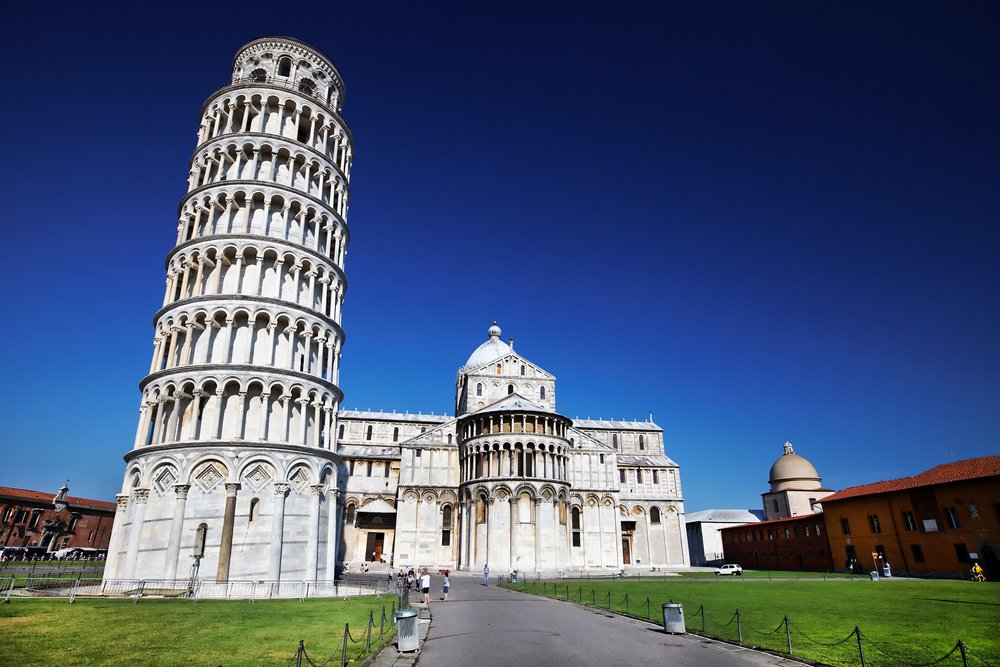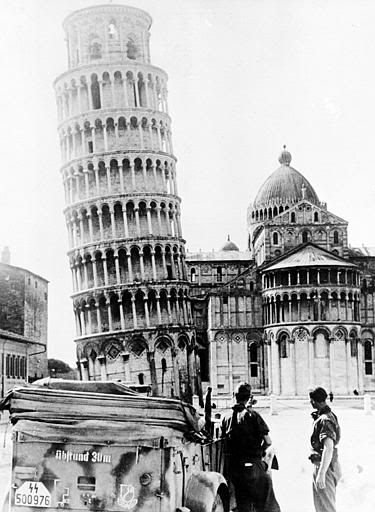Table of Contents (click to expand)
The Leaning Tower of Pisa is tilted because at the time of its construction, the foundation of this tower was only 3 meters deep and even that foundation was built on a dense clay mixture of soil that, as it turned out, couldn’t support and hold the weight of the mammoth tower.
The Leaning Tower of Pisa is considered one of the great wonders of the medieval world. The reason can basically be gleaned in the name of the tower… It Leans! The thing about this strange, crooked tower is that the creators never intended to construct a “leaning” tower. They just wanted to build a plain and simple bell tower. Little did they know at the time that their simple bell tower would turn out to be a wonder at which the whole world would marvel.

Construction began on the Leaning Tower of Pisa on August 9, 1173. For the first 5 years after that date, the tower stood upright, but after the construction of the 3rd floor was finished in 1178, the entire structure began to lean!
The Start Of The Lean
Tall and heavy structures depend quite a bit on the foundation of the structure. The foundation of this tower was only 3 meters deep and even that foundation was built on a dense clay mixture of soil that, as it turned out, couldn’t support and hold the weight of the huge tower, which led to this leaning phenomenon.
After this was noticed, construction stopped for 100 years and the authorities waited for the soil beneath the structure to settle. There was also an ongoing war with Genoa, so their attention was shifted.
Also Read: How Do Tower Cranes Work?
Construction Resumes And Halts
In 1272, Giovanni di Simone resumed construction and went on to add 4 more floors by compensating for the lean of the tower by making one side of the upper floors taller than the other. However, as it turned out, this manipulation added even more to the lean.
The construction stopped again in 1284 due to the battle of Meloria. The 7th floor was finished in 1319, a bell chamber was added in 1372 and a pathway was dug near the base of the tower (which also made the lean worse). The tower was then left alone until the 19th century.

During World War II, the tower was lucky enough not to be knocked down by American troops (they were ordered to destroy each and every standing structure that could aid German snipers against the advancing Allied troops). However, the generals decided to spare the tower and as such, the tower was left undamaged. (Source)
Also Read: Why Was The Eiffel Tower Built?
The Resurrection
Italy asked for help to prevent the tower from toppling over in 1964. However, they wanted the lean to remain intact, as it was what attracted and intrigued tourists. As a temporary measure, a leaden counterweight (800 tons) was installed.

In 1990, the Leaning Tower was closed. The bells were removed and the tower was anchored to the ground for support.
The tower was reopened to the general public in 2001. It currently leans at 3.99 degrees. The tower still stands tall, but yes, it is still definitely leaning.
How well do you understand the article above!

